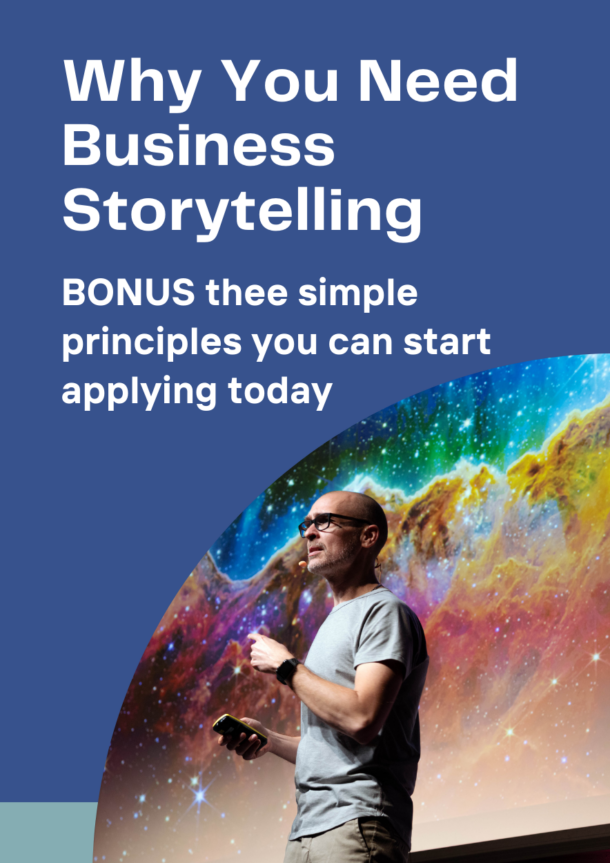We all struggle when it comes to presentations. Communicating clearly is generally a challenge. And presentations add to this daily challenge with their specific format, the slides, the public speaking.
Each time I start a presentation, I want to have a process I can fall back on. This process is exactly what I will share today. I will provide you with 60+ links to the best resources on presentation skills and public speaking that I’ve published over the years.
We all struggle when it comes to presentations. Here is what has been troubling me the most over the years. Whatever you’re struggling with, I’ve got you covered. The resources in this article cover any need.
What Your Audience Wants
Let’s start from the beginning. You must begin by researching the wants, goals and needs of your audience. You need to understand what your audience is expecting, what they are invested in, but also what their short-term goals and immediate needs are. You already know the question you need to answer to make your presentations great: there is one constant in every audience. They will each be asking themselves, “What’s in it for me?”
They need a meaningful answer to that question; otherwise, they will rob you of their most precious asset: their attention. It’s your job to grab their attention and answer their “what’s in it for me” question. To do so, you need to start a presentation effectively by engaging your audience with your biography. That’s right: your bio shouldn’t be a snoozer moment. It’s your first chance to win over your audience with content that is very close to your heart: your own story.
From Motivation to Transformation
As your presentation progresses, your job is to share your motivation for presenting with your audience.
Motivating an audience is no easy feat. That is why it is crucial to tell your audience why they’re there. Only when you have their attention can you change your audience through your content. That’s all that your presentation has to achieve: the sole purpose is to make a change.
Not all audience members are willing to accept this change. It’s important for you to accept that everyone has their own reaction to your content. Your job is to learn as much as possible from these reactions.
Trying to transform your audience. Managing their resistance to change. That is where your presentation happens. In the pendulum between these two clashing mindsets. You try to change them. They try to stay the same. At least until you reach peak transformation, until you reach the most transformative of all moments.
This transformative moment is the whole purpose of your presentation and marks the beginning of the end of your talk. But how do you close a presentation skillfully? I am glad you asked. First you want to provide a summary. But don’t just make a list of bullet points; instead, give your audience a bird’s eye view. Then it’s time to make your presentation memorable: you want to cement it in the memory of your audience.
People won’t remember each part of your talk, but your last impression is crucial. Make sure that it’s as good as your first one. How can you do it? With great presentation skills, but also with great mastery of the topic you just delivered.
Over the years I’ve had the chance to teach and write about these principles countless times. On this page I’ve compiled my best resources on Business Storytelling, but also a very practical guide that lists the 16 questions you must answer when you prepare a talk.
Guess what: the same principles are also underlined in my post (and corresponding YouTube video) about the 10 principles of effective presentations. They have had thousands of views. .
A Presentation Design Process for the Rest of Us
But enough with the theory. How do you go from your presentation idea to a talk that you can rehearse with skillfully designed slides? You start by switching off your computer and going back to pen and paper. This way you will get your creative juices flowing. Then you’ll start to lay out your structure, following the blueprint you just learned. You can now start thinking in terms of slides. (But also ask yourself the question whether you really always need slides.)
At this point you can start to transform your content into slides and sketch them graphically, while working separately on the written content of your presentation. Another short step, and you will be in the middle of the design process: designing your slides for your audience.
So how do you get your slides to look right? You need to know the right format for your presentation, find inspiration, choose the right colors, the right fonts, and only then you will be able to create great yet simple layouts.
As you start creating your presentation, you’re probably working on your first slide. Here is my guide to crafting the perfect first slide. However, I don’t want you to stop at your stunning first slide. That’s why I wrote a guide on how to create a gorgeous second slide.
You can now bring your sketches and your content together with your design, and start the editing process. Make sure you cut everything that doesn’t serve your core purpose and start rehearsing your presentation.
You have now learned all the rules. That’s great! You know everything you need to know in order to create a presentation with a great structure and great design. Start thinking like an artist: know the rules, so that you can also occasionally break them.
Don’t Let Public Speaking Be Your Weakest Link
Your presentation is now ready. But are you ready to present it to your audience? Are your public speaking skills on the same level as your design and storytelling abilities? The next resources will help you make sure they are. Starting from the most important step: rehearsing.
I want you to focus on your linguistic abilities now: what is your level of mastery of the language of your presentation? And in case you feel insecure, should you memorize your whole speech?
For a presenter, time is of the essence: you should time each section of your presentation so that you know exactly how long it takes.
Now you have your structure, your slides, and your exact timings. Before you hit the stage, you will need to work on some of the outward aspects of your delivery. Starting from the use of your voice, the nuances of your body language, the appearance of your clothes.
On stage you won’t just encounter your audience; you will also need to deal with computers and remotes and, if you’re really smart about presentations, with cameras and sound recorders. Another obstacle that most presenters fight with is their fear of public speaking. Let me reassure you: it’s completely normal, and it can be overcome.
Make sure you avoid some simple mistakes (like complaining) and be yourself. You will shine, I know that for sure.
If I had a magic wand, I would also give you a super power: the ability to give and receive honest feedback every time you’re on stage.
Not all presentations are the same. I have a special passion for complex presentations. For instance, I find technical presentations usually much more interesting than marketing presentations. They are content rich, yet sometimes they could benefit from better visuals or a better delivery.
Some presenters have the really hard job of selling. They have my unconditional sympathy, and I have a great collection of storytelling tips to share with them. Generating webinar content is also incredibly hard, so I’ve devoted resources specifically to this issue.
There are many ways your presentation can go wrong. Let’s make sure that it’s not because you didn’t handle a technical problem in the right way. Even the most prestigious conferences (such as TED) can suffer from glitches. You should come to the stage prepared to solve most common computer and projector issues, and be ready to handle the glitches like a pro. You should use your confidence and your knowledge to command a sense of control, even if stuff goes wrong.
And if you use a specialized platform like Prezi, be sure to follow my cinematography-based advice.
Time for You to Shine
What a roller coaster ride this has been! As promised, I have shared over 60 resources that will make you a better presenter.
May I suggest that you bookmark this page, share it on social media, and start learning today? This collection of resources is the best online master class on presentations and public speaking that you’ll be able to find. There is no excuse. You are bound to become a Presentation Hero. You just need to start your journey to presentation excellence.


